James Miller leads AUKUS effort to deliver nuclear submarines
If anyone can deliver Australia’s nuclear submarines it’s James Miller, who went from tennis pro to the Pentagon.
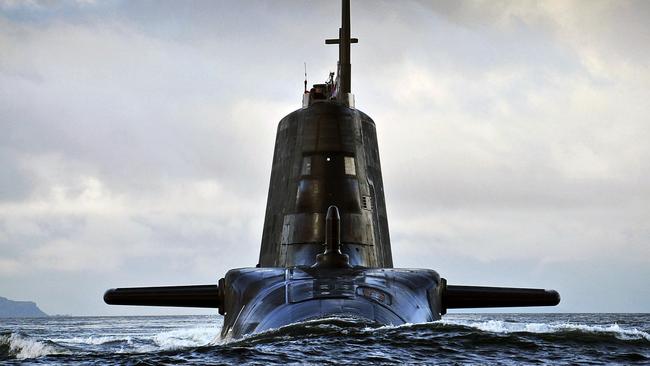
Between now and the arrival of the Royal Australian Navy’s first nuclear-powered submarines, at least seven federal elections, four British general elections and four US presidential elections will take place, any one of them enough to derail the complex political logistical venture.
Joe Biden, Boris Johnson or Scott Morrison, the three leaders who signed the AUKUS security pact in September, remain dedicated to bringing Australia into the world’s elite nuclear submarine club. But they have a lot on their plate.
If Australia’s future fleet of nuclear submarines depends on any one person, it’s James Miller, a veteran Pentagon official, nuclear weapons strategist and former doubles partner of tennis legend John McEnroe. He holds the keys to the eight nuclear-powered submarines Australia is meant to acquire under the deal.
“I wouldn’t play tennis with him, I wouldn’t dare,” says Michele Flournoy, Miller’s former boss in the Obama Pentagon, who was standing just outside the frame of the famous picture of Obama, Joe Biden and Hillary Clinton as they received updates on the US mission that killed Osama bin Laden.
In November, President Biden coaxed Barack Obama’s former undersecretary of defence for policy, Miller, 62, from an eight-year stint in consulting, a well-worn and often lucrative path for former officials, and into the White House to become the administration’s “AUKUS co-ordinator”, reporting to National Security Adviser Jake Sullivan.
Miller shot to prominence nationally when he resigned in disgust from the Defence Science Board, a nonpartisan advisory body for the US Defence Secretary, in June 2020, after defence secretary Mark Esper accompanied Donald Trump on his infamous walk to St John’s Church for a photo holding a Bible.
“You may not have been able to stop president Trump from directing this appalling use of force, but you could have chosen to oppose it. Instead, you visibly supported it,” he wrote in a scathing letter to Esper, decrying the former president’s use of the National Guard to clear Black Lives Matter protesters “using tear gas and rubber bullets”.
“You may be asked to make life-and-death decisions about using the military on American streets and against Americans. Where will you draw the line, and when will you draw it?” he wrote, in a private letter immediately leaked to the press.
For the first time since the 1950s, the US has promised in the AUKUS pact to share its top-secret nuclear technology with another country – Australia – as part of a wide-ranging military agreement to bring Australia, the US and Britain even closer together militarily to counter China’s growing power and aggression.
“After his time with Obama (Miller) was very keen to find a spot where he could really get his head around the resurgence of great power conflict in the 21st century,” Janine Davidson, president of Metropolitan State University, Denver, and former senior colleague, tells The Australian.
Impeccably credentialed, with degrees in economics from Stanford and a PhD in the geopolitics of nuclear weapons from Harvard, Miller has a mammoth task ahead of him corralling sceptics in the US Navy and snuffing out bureaucratic snags that could leave Australia with an ageing fleet of conventional submarines.
“He’s uniquely qualified for this role, with his experience managing bureaucratic politics and building consensus,” says Flournoy, now a senior executive at WestExec, a DC consulting outfit with deep connections in the Biden administration. “Jim’s a brilliant strategic thinker, an analyst at heart and one of these rare people who can actually translate high policy into technical solutions.”
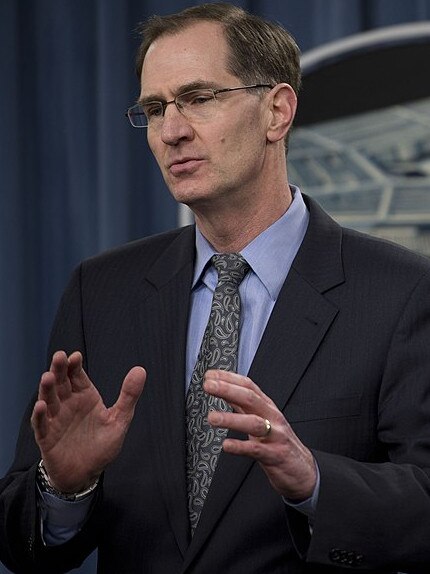
Miller succeeded Flournoy as undersecretary of defence for policy in 2012, becoming one of the strategic brains behind US defence after earlier proving himself as lead architect of the US government’s global posture (determining which US military forces should be put where) and missile defence reviews, winning a swag of public service medals along the way. “He was a part of the discussions about the rebalancing to Asia during the Obama years, the so-called pivot,” says Brad Roberts, a former defence official who’s known Miller since he arrived in DC in the late 1980s.
The Obama, Trump and Biden administrations have made a concerted effort to focus US resources on the Pacific amid China’s ominous renaissance as a global superpower. The administration on Friday issued a 12-page Indo-Pacific Strategy, which included providing Australia with nuclear submarines “at the earliest possible date”.
America’s top diplomat, US Secretary of State Antony Blinken, was in Melbourne last week for a three-day visit, the highest level by the Biden administration so far, meeting with Scott Morrison, Marise Payne and the foreign ministers of India and Japan, the two other nations in the Quad, which is seen as a bulwark against Chinese aggression in the region. AUKUS would have been high up on Blinken’s agenda.
The trip signalled the importance with which the US holds its relationship with Australia, even as it remains on high alert over Russia’s potential invasion of Ukraine on the other side of the world.
The White House didn’t answer a request for an interview with Miller, which isn’t unusual. One doesn’t need any hands to count the number of interviews the Biden administration has granted Australian journalists in Washington.
Two of them filed formal complaints; one after having six interview requests rejected, another after Australian journalists weren’t able to ask a question about AUKUS itself in an advance press briefing when AUKUS was announced.
Nevertheless, Miller appears to have the best chance of anyone of setting the deal on the path to fruition, at least for the next few years – the submarines aren’t expected to arrive until the late 2030s at the earliest.
“He is very influential and skilled in moving forward and securing initiatives within the US government,” says Roberts. “Jim’s affable, intense, purposeful, and engaging.”
Before working for the Obama administration, Miller helped set up the Centre for New American Security, now the most influential think tank in Washington, whose alumni populate the top perches of the US security state. The President’s Asia tsar, Kurt Campbell, founded CNAS in 2007. Colin Kahl, the current undersecretary of defence for policy, Avril Haines, the director of National Intelligence, and Ely Ratner, the top Pentagon official for Indo-Pacific affairs (which includes Australia), were all top CNAS analysts.
Davidson muses over whether “Jim” has four or five grown children.
“He’s an incredibly likeable family man, the kind of guy that you don’t get a lot of in DC, where he will engage with somebody and treat them well regardless of rank and background,” she tells The Australian.
A centrist Democrat, Miller is well known in Washington on both sides of the political aisle.
James “Sandy” Winnefeld, a retired US Navy admiral who worked with Miller for six years until 2015, says Miller is not a “wild-eyed radical” and is a “terrific choice” for AUKUS co-ordinator.
“He is a very rational centrist who believes in a strong defence as a strong deterrent backing diplomacy, in the importance of allies,” Winnefeld says.
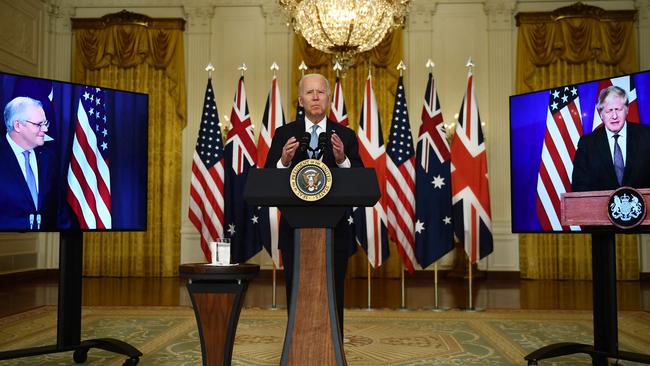
Finding criticism of the Pentagon tennis ace is difficult, even off the record. The closest came from a former Defence Department official, who said: “He’s a green eyeshade guy – quite competent, but not known to be a creative, entrepreneurial policymaker.”
For the public, the details of AUKUS extend to political speeches and press releases. Unlike defence treaties or trade agreements, the AUKUS foundational documents remain “classified”, according to the Prime Minister’s office, providing cynics with the opportunity to cast the pact as a political statement.
AUKUS, which extends beyond submarines to greater sharing of intelligence and interoperability of defence equipment, was widely praised by defence experts throughout the three nations.
French diplomats, still smarting from France’s loss of a lucrative submarine contract, collateral damage from the pact, argue Australia’s submarines will never arrive and, if they do, they’ll be more expensive than the $66bn Australia had contracted in 2016 for 12 French-designed submarines to be built in South Australia.
The press releases specify “Australian made” but it’s not clear what that means. Many analysts reckon at least parts of the ships, and certainly the nuclear reactors that power them, will be built in the US, or more likely in the UK, where shipyards have more capacity than yards in Connecticut and Virginia, both struggling to keep up with US Navy orders.
Others worry nuclear non-proliferation rules, treaties that aim to stop the spread of nuclear weapons around the world, will hamper Australia’s submarines.
Australia’s submarines could set a worrying precedent for the use of high-enriched uranium (the kind needed to power US nuclear subs) in Iran, Korea, Brazil or any other country that decides it wants nuclear subs too.
Miller’s first big challenge will be managing the US Navy, which opposed AUKUS within the US government but was overruled by the White House. The US has only ever shared its nuclear secrets with the UK, in 1958, a move to strengthen a key ally in the face of the Soviet threat.
“The highest-risk part of the AUKUS effort will be the submarine element; it’s going to take sustained political support,” says Flournoy.
A Labor government in Canberra might feel less ownership and interest in the AUKUS deal, for instance, and let it wither on the vine.
“There’s a huge amount of work to develop the technical and human capital to actually be able to operate and maintain them,” Flournoy says of the subs. “It’s a big, heavy lift.”
The future commanders of Australia’s nuclear fleet need to be starting at a nuclear naval academy now.
“Subs are nothing to mess around with; our force is basically zero mistakes,” says Davidson. “Even if you don’t create an entire shipbuilding enterprise and buy them instead, you still need serious layers of expertise to maintain and repair them, and it’s highly competitive for sailors at every level.”
Defence Minister Peter Dutton and former prime minister Tony Abbott have suggested Australia lease a US nuclear-powered submarine in advance of taking possession of one, in order to train crew and become familiar with the technology.
AUKUS aims to increase the total number of submarines among the three nations, not shuffle the existing fleets differently.
Randy Schriver, a former assistant secretary of defence in the Trump administration, warned of “many potential obstacles on both sides” in an interview with The Australian in January.
“There needs to be sustained commitment from the senior political leaders in both capitals, otherwise the chances of Australia deploying its own nuclear submarine will drop below 50 per cent,” he said.
Australia’s ban on nuclear energy, meaning we have negligible civilian nuclear workforce or expertise to draw on to complement a nuclear-powered force, puzzles US defence experts.
“It’s important for Australia to have serious submarine forces, but the sort of aversion to nuclear power there doesn’t serve you well,” Davidson says.
Although a large uranium exporter, Australia is the only nation in the G20 with an outright ban on nuclear energy, a quirk of a deal between the Howard government and the Greens in 1998 to pass unrelated legislation in the Senate.
If Miller is seen to manage the start of AUKUS well, the next stop for him could be deputy or even national security adviser, among the most powerful jobs in President Biden’s inner circle.
His boss, Jake Sullivan, appears to be the most likely top presidential adviser to move on after what was widely seen as a humiliating fiasco in Afghanistan.
Luckily for Miller, the multi-decade delivery timeline means he won’t be blamed if the subs never materialise. France’s Naval Group projected a 13-year gap between delivery of the first new sub, pencilled in for 2027, and the last in 2040.
If the first US-designed subs are built to the same schedule, and start to arrive in the late 2030s, as the Australian Navy anticipates, Miller will be into his 90s when the AUKUS pact fully bears fruit.
The Australian Navy is already drawing up contingency plans to contract Swedish submarine maker SAAB, which designed Australia’s existing, ageing Collins-class fleet, to extend its life into the 2040s.
The US has 68 nuclear-powered subs, Britain 10. China has at least 15 nuclear submarines, according to the US government, with plans to build dozens more. For now, submarines are all the rage, but who knows what new technology might emerge in coming decades to render them obsolete.
Politics and logistics are likely the biggest threat to Australia’s nascent nuclear fleet, but there’s a slim chance they’ll be obsolete, when and if they arrive. They could be world’s most expensive lemons ever.


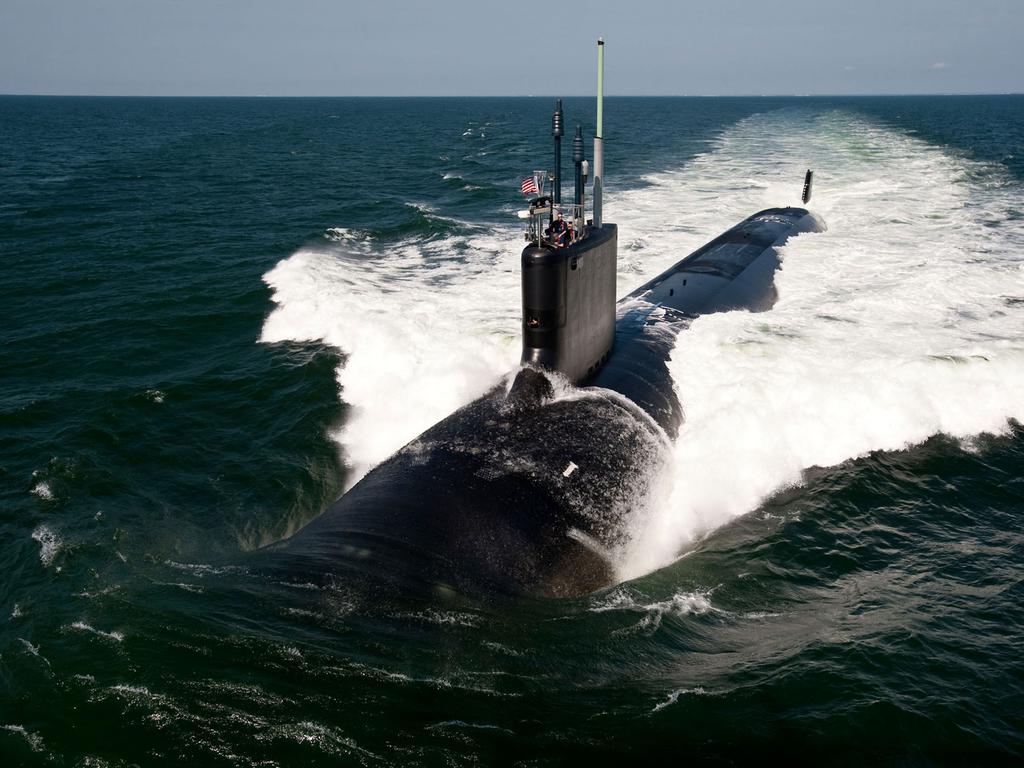


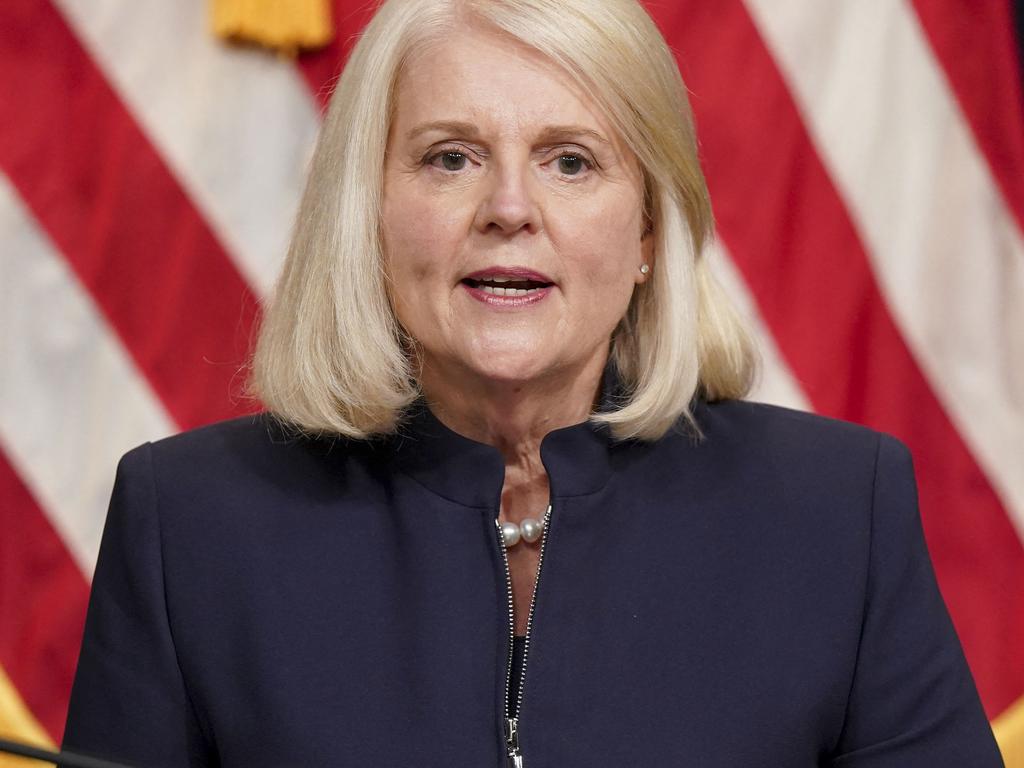
To join the conversation, please log in. Don't have an account? Register
Join the conversation, you are commenting as Logout